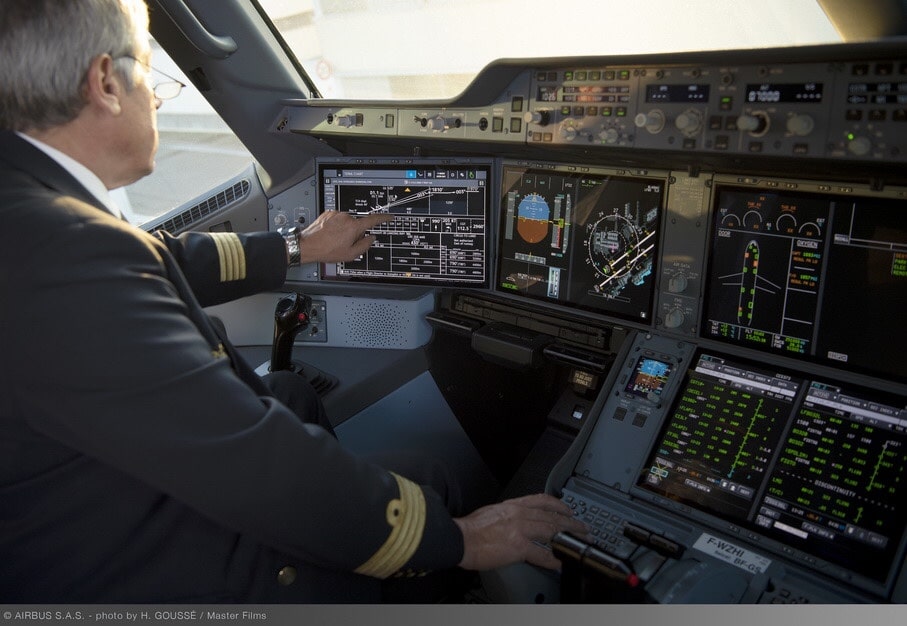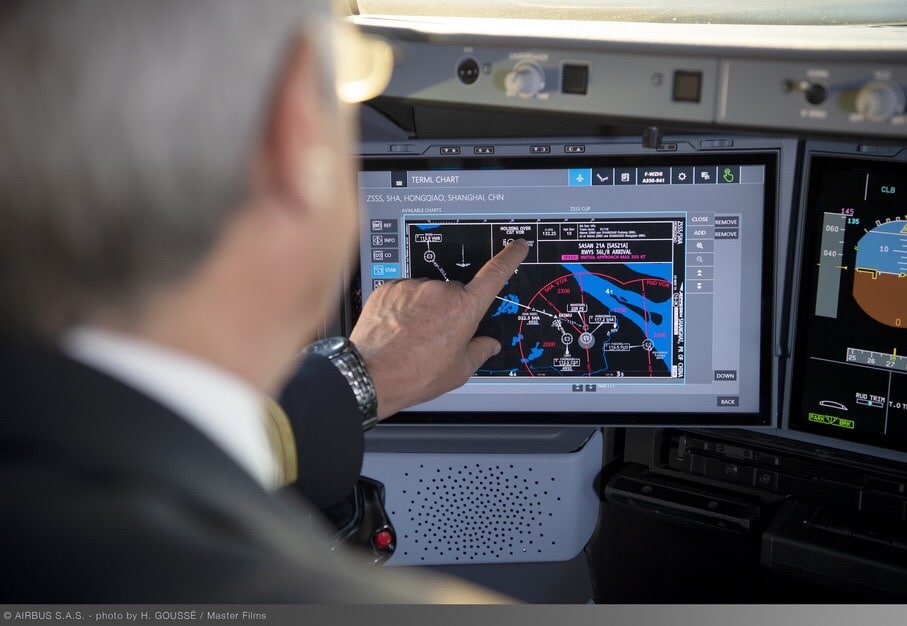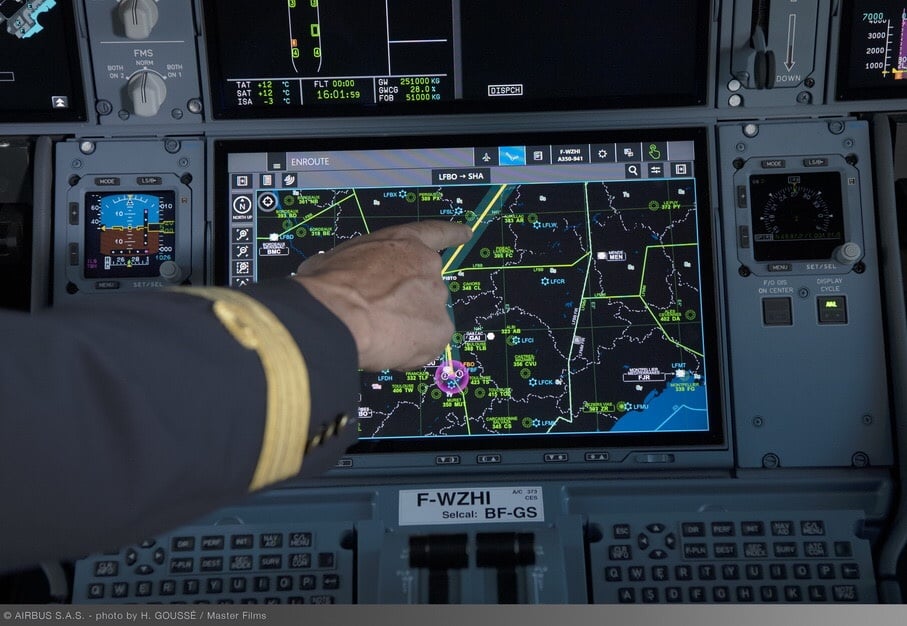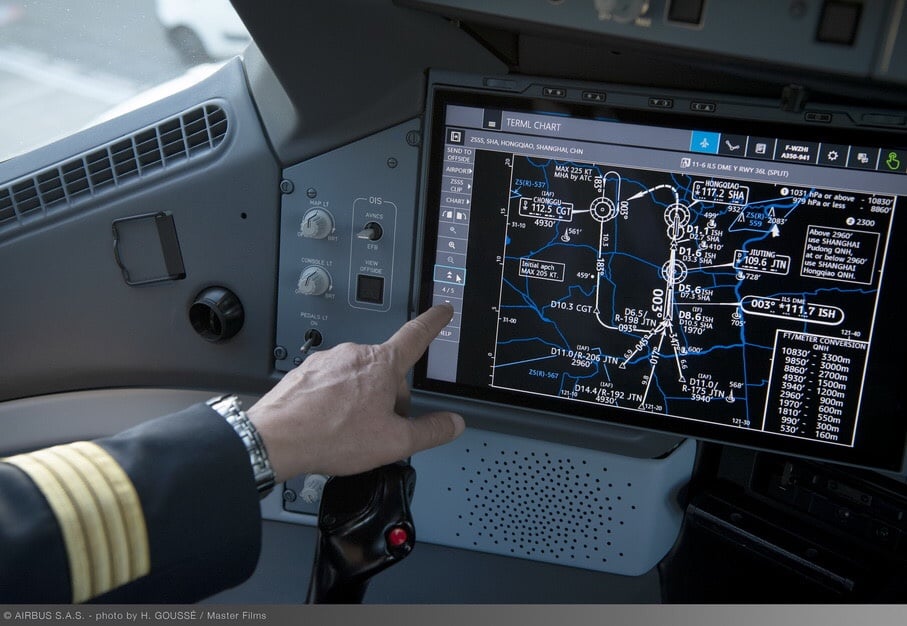Aviation
Airbus begins deliveries of first A350s with touchscreen cockpit displays option to customers

Toulouse, 19th December 2019 – Airbus has commenced deliveries to airlines of the first A350s equipped with pioneering new touchscreen cockpit displays. Specially developed for the A350 together with Thales, they will confer enhanced operational efficiencies, greater crew interaction, cockpit symmetry and smoother information management. On 18th December China Eastern Airlines took delivery in Toulouse of the first A350 equipped with the new devices. To date, around 20 airlines have selected the option for their new A350s.
Airbus is hiring for its future projects

Of the A350 cockpit’s six large screens, three can now become touch capable: the two outer displays plus the lower-centre display. These displays now offer touchscreen capability for the pilots when presenting Electronic Flight Bag (EFB) applications. This new method of input complements the existing physical keyboard integrated into the retractable table in front of each pilot and also the keyboard & trackball “keyboard-cursor control unit” (KCCU) located on the centre console.
Iberia takes delivery of its first A350-900

The new technology, which was recently certified for the A350 by EASA in November, facilitates ‘pinch-zooming’ and panning gestures and will facilitate more flexibility and better interaction between both pilots, particularly during these scenarios: (a) before take-off (for computing take-off performance while entering data into the flight management system “FMS”); (b) in-flight/cruise (for accessing en-route navigation charts); and (c) during approach preparation (for consulting the terminal charts before entering FMS data). Moreover, during high workload phases of flight, the touchscreen capability reduces need for pilots to make multiple cursor inputs and avoids them having to flip between different displays when using the EFB applications collaboratively on the lower centre display.

Patrick Piedrafita, Head of Airbus’ A350 XWB Programme said: “Airbus continues to set the industry trends in aircraft cockpit design with these new interactive touchscreen displays in the A350. With our partner Thales we are very proud to bring this technology to our customers, to enhance their aircrews’ operations.”

The A350 XWB features the latest aerodynamic design, a carbon fibre fuselage and wings, plus new fuel-efficient Rolls-Royce engines. Together, these features translate into unrivalled levels of operational efficiency with a 25 per cent reduction in fuel burn and emissions. By the end of November, the A350 XWB Family had received 959 firm orders from 51 customers.

Aviation
Boeing, Antonov to Collaborate on Defense Projects

– MOU represents Boeing’s commitment to work with Ukrainian industry
– Includes exploring opportunities for collaborating on in-country support of Unmanned Aerial Systems
A Memorandum of Understanding was signed today by Boeing and Antonov Company to investigate potential collaboration on defense-related projects.
“We’re happy to keep collaborating with the Antonov Company to help Ukraine’s economic development and expansion,” stated Ted Colbert, CEO and president of Boeing Defence, Space, & Security.
Airbus and the Antonov An-225: The Best Partnership:Click here
“This agreement demonstrates our ongoing efforts to find more opportunities to work with Ukrainian industry, which was underscored by our signing of the Ukrainian Defence Industry Compact earlier this year.”
The areas of potential collaboration identified in the agreement consist of training, logistical support and overhaul services for tactical Unmanned Aerial Systems utilized by the Ukrainian Armed Forces, which includes the ScanEagle. In addition, the companies will also explore opportunities for Antonov to provide engineering support to Boeing.
The six largest cargo aircraft ever built in the aviation industry:Click here
“A strong, innovative, and efficient defense industry is key to sustainable economic development and national security, and we are extremely excited to collaborate with Boeing,” said Ievhen Gavrylov, CEO of Antonov Company.
This agreement brings a whole new level of opportunity to implement the latest and most effective solutions – in addition to the possibility of future projects with Boeing in the aerospace and defense industry.”
-

 Travel1 week ago
Travel1 week agoAir India to Expand US Operations with Three New Routes After a Decade
-

 Travel2 weeks ago
Travel2 weeks agoWhy We Should Avoid These Stamps in a Passport
-

 Airlines1 month ago
Airlines1 month agoInvestigations Reveal Fake Chinese Titanium in Boeing and Airbus Jets
-

 Tech4 weeks ago
Tech4 weeks agoChina’s CATL Plans 1,800-Mile Electric Plane Launch by 2027
-

 Airport3 days ago
Airport3 days agoTop 10 Largest Airports in the World by Size
-

 Aerospace4 weeks ago
Aerospace4 weeks agoChina’s Fighter Jets Turn Wings into Autonomous Drones
-

 Airlines4 days ago
Airlines4 days agoAir India Rolls Out A350s for Delhi-New York JFK and Newark Routes
-

 Defence3 weeks ago
Defence3 weeks agoBoeing Enhances Chinook with New Engines and Block II Upgrades at $96 Million







